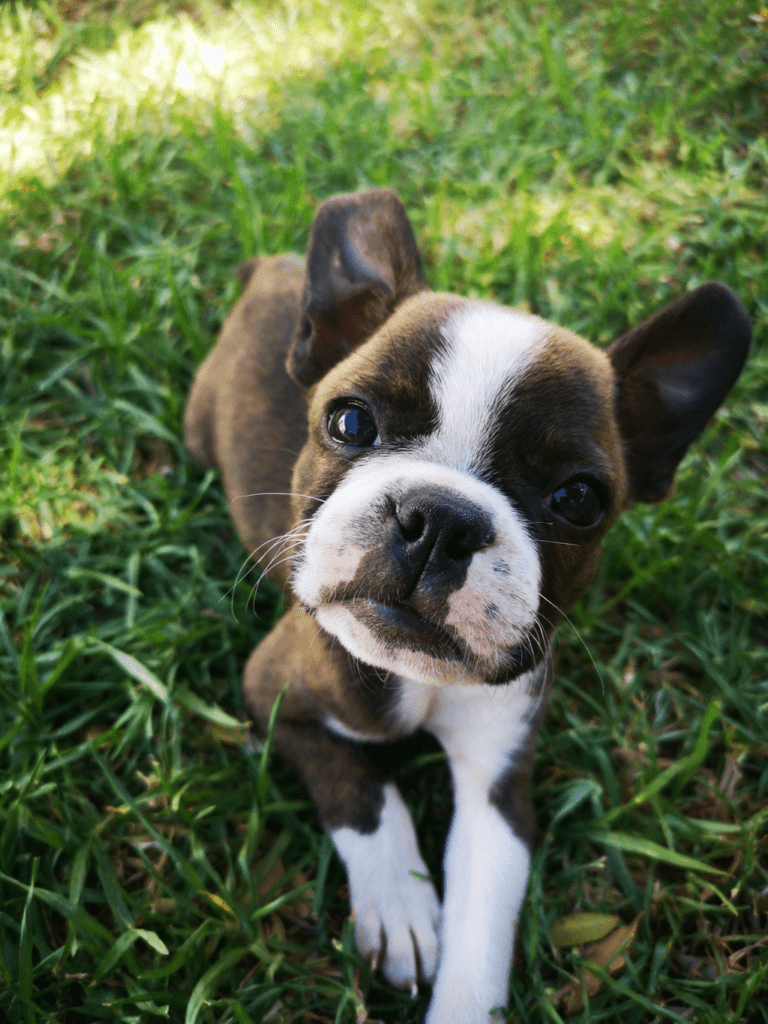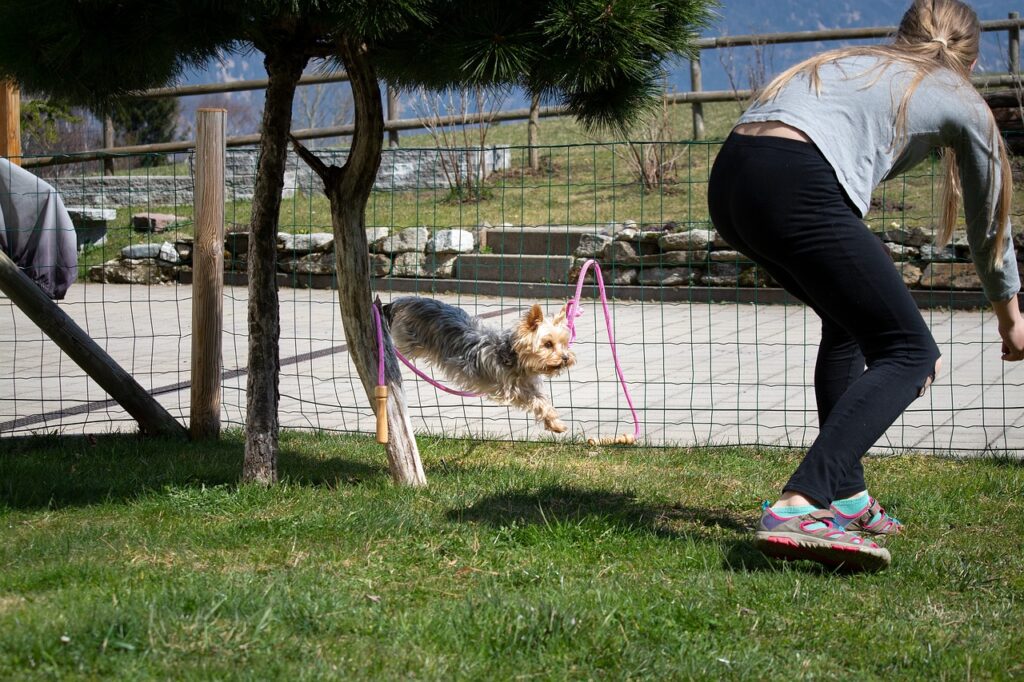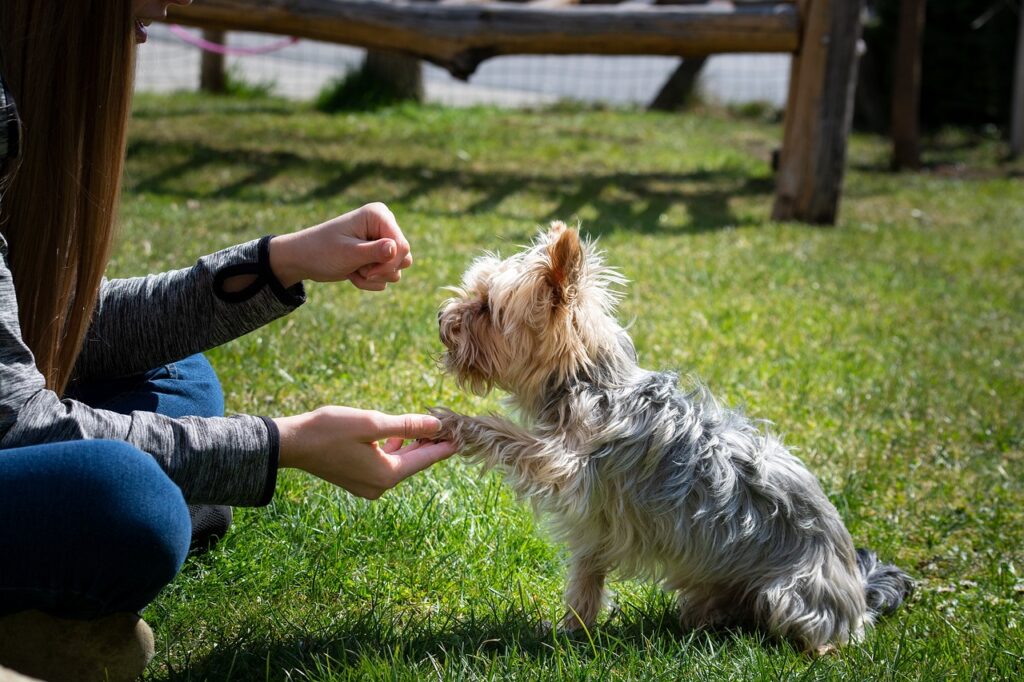Potty training is an essential part of raising a puppy. It requires patience, consistency, and positive reinforcement. In this blog post, we will provide you with some helpful tips to make the potty training process easier and more effective.
Create a designated potty area
When it comes to potty training your puppy, one of the first things you’ll need to do is create a designated area in your yard where you want your puppy to go potty. This will help establish a routine and make the training process much easier for both you and your furry friend.
Here are some tips to help you create a designated potty area:
Choose a specific spot in your yard
Start by choosing a specific spot in your yard where you want your puppy to do their business. This spot should be easily accessible and convenient for both you and your puppy. It should be an area that is easily accessible, yet away from high traffic areas or areas where your puppy likes to play.
Take your puppy to this spot consistently
Consistency is key when it comes to potty training. After your puppy has had a meal, a nap, or some playtime, make sure to take them to their designated potty area. This will help them understand that this is the spot where they should go potty.
Using a leash can also be helpful in guiding your puppy to the designated area and preventing accidents elsewhere in your yard. Remember to stay patient and give your puppy time to sniff around and find the perfect spot.
Use verbal cues
Verbal cues can be a great way to associate the designated potty area with the action of going potty. Choose a phrase like “go potty” or “do your business” and use it consistently when you take your puppy to their designated spot.
Over time, your puppy will start to understand what the phrase means and will associate it with going potty in the designated area. Be sure to praise and reward your puppy when they successfully go potty in the right spot to reinforce this behavior.
Creating a designated potty area for your puppy is an important step in their potty training journey. By choosing a specific spot, being consistent in taking them to that spot, and using verbal cues, you’ll be well on your way to having a well-trained and housebroken pup.
Remember, accidents may happen during the potty training process. Stay patient, use positive reinforcement, and never punish your puppy for accidents.
In the next section, we will discuss the importance of establishing a routine for your puppy’s potty training. Stick around to learn more!
Establish a Routine
When bringing a new puppy into your home, one of the most important things you can do is to establish a routine. A routine provides structure and helps your puppy learn what is expected of them. It also aids in house training and helps regulate their bathroom habits. Here are some tips on how to establish a routine for your puppy.
1. Set a Regular Feeding Schedule
Starting with a regular feeding schedule is key to establishing a routine for your puppy. Feed them at the same time every day, preferably in a quiet and calm area of your home. This helps regulate their digestive system and promotes regular bathroom habits.
Choose high-quality puppy food that is appropriate for their age and breed. Consult with your veterinarian to determine the correct portion size and frequency of feedings. Puppies typically require multiple smaller meals throughout the day.
2. Morning and Bedtime Bathroom Breaks
Take your puppy outside first thing in the morning and right before bedtime. This helps them start and end their day on the right note. Choose a designated area in your yard where you want them to do their business.
Use a leash and take them for a short walk to encourage them to relieve themselves. Stay with them until they have accomplished their task and then reward them with praise or a small treat. By doing this consistently, your puppy will learn that this is the appropriate time and place to use the bathroom.
3. Frequent Bathroom Breaks During the Day
Puppies have small bladders and need to urinate more frequently than adult dogs. Take them out every 1-2 hours during the day, especially if they have been playing, napping, or drinking water. This helps prevent accidents inside your home and teaches them to associate going outside with bathroom time.
Again, choose a designated spot in your yard and use a leash to take them there. Be patient and wait for them to do their business. Praise and reward them when they are successful. Over time, they will learn to hold their bladder for longer periods and ask to go outside when they need to go.
Remember to be consistent and patient when establishing a routine for your puppy. It takes time for them to learn and adjust. By following these tips, you can set your puppy up for success and create a harmonious living environment for both you and your furry friend.
Reward and praise
When it comes to potty training your puppy, positive reinforcement is key. By rewarding and praising your puppy for going potty in the designated area, you can create a positive association and encourage them to continue this behavior.
Here are some tips to help you effectively reward and praise your puppy during the potty training process:
1. Treats as rewards
One of the most common ways to reward your puppy is by using treats. Choose small, bite-sized treats that your puppy loves and keep them easily accessible during potty training sessions. When your puppy successfully goes potty outside, immediately give them a treat and use verbal praise such as “Good job!” or “Well done!” This positive reinforcement will help your puppy understand that going potty outside is a desirable behavior.
2. Verbal praise and positive reinforcement
In addition to treats, verbal praise is equally important in potty training. Use a happy and enthusiastic tone to let your puppy know they have done something right. Repeat key phrases such as “Good potty!” or “Great job going outside!” This positive reinforcement will strengthen the bond between you and your puppy, as well as reinforce the desired behavior of going potty in the appropriate area.
3. Create a routine
To maximize the effectiveness of rewards and praise, it’s important to establish a consistent routine. Take your puppy to the designated potty area at regular intervals, such as after meals, drinking water, playing, or waking up from a nap. When your puppy successfully goes potty in the designated area, immediately reward and praise them. Consistency and repetition will help your puppy understand the expectations and reinforce the positive association with going potty outside.
4. Avoid punishment or scolding
If accidents happen and your puppy goes potty indoors, it’s important to avoid punishment or scolding. Punishing your puppy for accidents can create fear and confusion, ultimately delaying the potty training process. Instead, calmly clean up the mess without drawing attention to it. By remaining calm and patient, you can focus on teaching your puppy the desired behavior of going potty outside.
Remember, potty training takes time and patience. By using positive reinforcement through treats, verbal praise, and consistent routines, you can effectively reward and praise your puppy. Avoid punishment or scolding if accidents happen, as it can only hinder the training process. With consistent training and positive reinforcement, your puppy will soon learn to go potty in the designated area and develop good bathroom habits.
Supervise and confine
When bringing a new puppy into your home, it’s essential to have a plan for potty training. This is a crucial step in ensuring your puppy grows up to be a well-behaved and obedient dog. One of the most fundamental aspects of potty training is to supervise and confine your puppy appropriately.
Keep a close eye on your puppy to prevent accidents indoors.
Puppies have little bladder control and may need to eliminate frequently. It is essential to watch your puppy closely to prevent indoor accidents. When you see signs that your puppy needs to go potty, such as sniffing around or circling, quickly take them outside to their designated potty area. Keeping a watchful eye on your puppy will help you catch accidents before they happen.
Use a crate or a small confined space when you cannot supervise them.
There may be times when you are unable to keep a constant eye on your puppy, such as when you need to leave the house or while you sleep at night. During these times, it is crucial to confine your puppy to a small, safe space. One option is to use a crate; puppies have an innate desire to keep their sleeping area clean, and by confining them to a crate, you are utilizing this natural instinct. Ensure the crate is appropriately sized for your puppy, providing enough room to stand, turn around, and lie down comfortably.
Another option is to use a small confined space, such as a playpen or a puppy-proofed room. This area should be free from any objects or materials that your puppy may chew on or ingest. By confining your puppy, you prevent them from having accidents in unsupervised areas of your home.
Gradually increase their freedom as they become more reliable with their potty training.
As your puppy becomes more reliable with their potty training and starts to understand where they should go potty, you can gradually increase their freedom. Start by allowing them access to small areas of your home under your close supervision. If they continue to use the designated potty area consistently without accidents, you can give them access to more significant areas of your home.
Remember, it is crucial to supervise your puppy during this stage to ensure they do not have any accidents. If accidents occur, it may be a sign that your puppy needs more time to build their understanding and reliability.
Supervising and confining your puppy is a vital part of their potty training journey. By keeping a close eye on them, using a crate or confined space when necessary, and gradually increasing their freedom, you will set them up for success. Remember to be patient and consistent, as every puppy learns at their own pace.
Clean accidents properly
Accidents happen, especially when you have a puppy in the house. It’s important to address these accidents promptly and properly to ensure a clean and hygienic living space for both you and your furry friend. By following a few simple steps, you can effectively clean indoor accidents and prevent your puppy from repeating the same behavior.
Clean with an enzymatic cleaner
When dealing with indoor accidents, it’s crucial to use an enzymatic cleaner. Unlike regular cleaners, enzymatic cleaners contain biological enzymes that break down the organic compounds in urine, feces, and other bodily fluids. This process effectively removes the scent that would otherwise attract your puppy to the same spot.
To clean the accident, start by blotting up any excess liquid using paper towels or a clean cloth. Then, apply the enzymatic cleaner to the affected area according to the product’s instructions. Allow the cleaner to sit for the recommended amount of time to give the enzymes enough time to work their magic. Finally, blot up the excess cleaner and let the area air dry.
Avoid ammonia-based cleaners
While ammonia-based cleaners may be effective at removing stains and odors, they should be avoided when cleaning up puppy accidents. Ammonia has a similar scent to urine, which can attract your puppy back to the same spot. Using ammonia-based cleaners may inadvertently encourage your puppy to continue eliminating in that area.
Instead, opt for enzymatic cleaners or other pet-specific cleaning products. These alternatives will effectively eliminate the odor without the risk of attracting your puppy to the same spot.
Thoroughly clean and deodorize the area
Simply removing the visible mess is not enough when it comes to cleaning up after accidents. To prevent repeat accidents, it’s essential to thoroughly clean and deodorize the area.
Start by using a damp cloth or sponge to wipe down any surfaces that may have come into contact with the accident. This includes walls, baseboards, and any nearby furniture. Then, use the enzymatic cleaner to treat the affected area, as mentioned earlier.
Once the area is clean, it’s important to deodorize it as well. You can use a pet-friendly deodorizing spray or sprinkle baking soda over the spot and let it sit for a few hours before vacuuming it up. This will help neutralize any remaining odors and discourage your puppy from marking the same spot in the future.
By following these steps and using the right cleaning products, you can effectively clean up after indoor accidents and prevent your puppy from repeating the behavior. With time, patience, and proper cleaning techniques, your house will stay clean and fresh, and your puppy will learn where it’s appropriate to relieve themselves.
Be Patient and Consistent
When it comes to potty training your puppy, it’s important to remember that it takes time and patience. Accidents are a normal part of the process, so it’s essential to stay calm and consistent throughout. Here are some tips to help you navigate this phase successfully:
1. Set Realistic Expectations
Understand that potty training is a learning process for your puppy. Just like humans, they need time to develop the necessary habits and understand where they should go to relieve themselves. Be prepared for accidents to happen and avoid getting frustrated or discouraged.
2. Establish a Routine
Consistency is key in potty training. Set a specific schedule for your puppy’s bathroom breaks and stick to it. Take them outside first thing in the morning, after meals, after naps, and before bedtime. By following a routine, your puppy will learn to associate these times with going potty outside.
3. Reinforce Positive Behavior
When your puppy goes potty in the designated area outside, reward them with praise, treats, or a special toy. Positive reinforcement helps reinforce the desired behavior and encourages them to continue eliminating in the right place. Make sure to show enthusiasm and use a happy tone so they know they’ve done something good.
4. Keep an Eye on Your Puppy
During the potty training process, it’s crucial to closely supervise your puppy. Watch for signs that they need to go, such as sniffing around or circling. If you notice any of these behaviors, quickly take them outside to their designated potty spot. The more attentive you are, the easier it will be to prevent accidents inside.
5. Clean Accidents Thoroughly
If accidents happen indoors, clean them up promptly and thoroughly. Use an enzymatic cleaner specifically designed for pet messes to remove any lingering scent. Avoid using ammonia-based cleaners, as they can actually attract your puppy to the same spot again.
6. Avoid Punishment
Never punish your puppy for accidents. Rubbing their nose in it, scolding them, or using physical force will only confuse and scare them. Instead, focus on positive reinforcement and redirecting them to the appropriate potty area. Punishment will only hinder their progress and create a negative association with potty training.
TL;DR
Potty training takes time and accidents are normal. Stay patient and consistent, establish a routine, reinforce positive behavior, and closely supervise your puppy. Avoid punishment and ensure accidents are cleaned thoroughly. Remember, patience and consistency are the keys to successful potty training.



